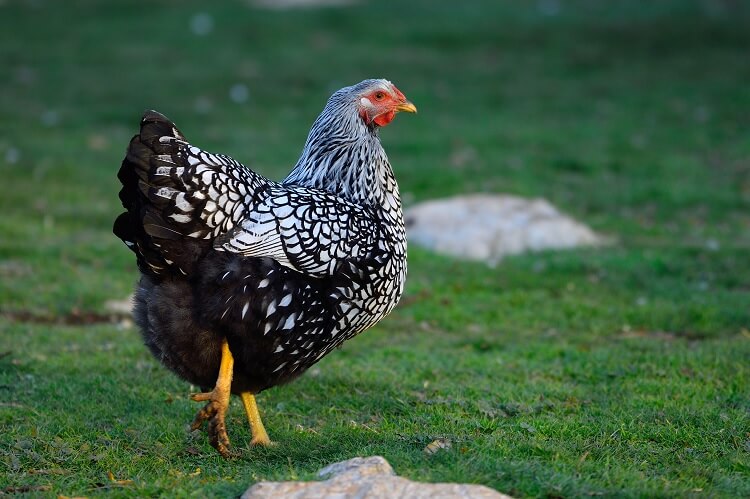Bumblefoot is a common ailment that affects chickens and geese. It is a bacterial infection that affects the foot of the bird and can cause swelling, pain, and even lameness if left untreated. In this post, we'll take a closer look at bumblefoot, including its symptoms, causes, prevention, and how to treat it at home.
Symptoms
The first sign of bumblefoot is usually a small, hard lump on the bottom of the foot. As the infection progresses, the lump will become larger and more swollen, and the skin around it may become red and inflamed. The bird may also start to limp or favor one foot, and may be reluctant to walk or stand for long periods of time. In severe cases, the bird may become lame and unable to walk at all.

Causes
Bumblefoot is caused by a bacterial infection, usually Staphylococcus aureus. The bacteria enter the foot through small cuts or scratches on the skin and can then spread to the deeper tissues of the foot. The condition is more common in birds that spend a lot of time on hard or rough surfaces, as this can cause damage to the skin of the foot and create an entry point for bacteria.

Prevention
Preventing bumblefoot involves taking steps to reduce the risk of injury and infection to the bird's feet. This can include providing a soft and clean surface for the bird to walk on, such as grass or straw, and keeping the coop and run clean and free of debris that could cause injury. It's also important to keep the bird's nails trimmed, as overgrown nails can put pressure on the foot and increase the risk of injury.
Treatment
If you suspect that your bird has bumblefoot, it's important to take action right away to prevent the infection from spreading. The first step is to isolate the affected bird from the rest of the flock to prevent the infection from spreading to other birds. Then, you can begin treatment at home.

The first step in treating bumblefoot is to clean the affected foot thoroughly. This can be done by soaking the foot in warm, soapy water for 10-15 minutes to soften the scab and allow for easier removal. Then, using a pair of sterilized tweezers, gently remove the scab and any pus or debris from the affected area. Be sure to clean the area thoroughly with an antiseptic solution such as iodine or hydrogen peroxide.

Once the area is clean, apply a topical antibiotic ointment such as Neosporin to the affected area and cover it with a clean bandage. Change the bandage and reapply the ointment daily until the wound has healed completely.
In more severe cases, your veterinarian may need to be consulted for more extensive treatment, such as antibiotics or surgery to remove infected tissue.
In conclusion, bumblefoot is a common ailment that affects chickens and geese, but it can be prevented with proper care and attention to the bird's feet. If your bird does develop bumblefoot, prompt treatment at home can help to prevent the infection from spreading and speed up the healing process.

0 comments